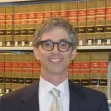Land Use
Another Story of a City: Biodiversity
The short-sightedness of overarching proclamations for the right city form obscures the very context in which cities are built and expanded. City planning must become reconnected to its environmental context.
L.A.'s New Mayor Halts Planning Department Merger
A controversial plan to merge L.A.'s Planning and Building and Safety Departments has been scuttled, for now. Mayor Eric Garcetti, who supported the merger as a councilman, announced it will not go forward in January as his predecessor had planned.
Effort to Rein in Federal Flood Insurance Program Causing Alarm
As a 2012 law aimed reforming the "increasingly unsustainable" National Flood Insurance Program goes into effect, some homeowners in coastal areas are seeing dramatic increases in their insurance rates. Lawmakers are pondering how to ease the pain.
City Initiative Embraces Bottom-Up Placemaking in L.A.
The same week that the City of L.A. made a big splash with its "Great Streets Initiative", a new program that has the potential to have a sizable impact on city streets went less noticed. Damien Newton reports on the city's "People St" program.

Why Suburban Sprawl is the Worst Idea America Has Ever Had
In a recent "TED Talk", Jeff Speck makes the case for creating a more walkable America based not on design arguments, but rather on the potential to create a more economically resilient, healthier, and environmentally sustainable country.
Will Move to Encourage Density Stifle Downtown L.A. Redevelopment?
Out of concern that L.A.'s downtown properties are not being put to the highest and best use, the City Councilman representing the district has "quietly authored" a motion to incentivize density and place a moratorium on low-rise development.

Too Much TOD Set to Strain D.C.'s Subway
New development is poised to add thousands of riders to D.C.'s Metro, but rush hour trains are often packed already. Though Metro has proposed $6 billion in fixes, some see better land use planning across the area as the key to solving the problem.
Top 100 City Innovators Worldwide
To celebrate its first anniversary, Future Cities has assembled a list of the top 100 city innovators making the biggest difference across a range of industries and specialties.
Seeking an Automotive Balance in Philly
The city continues to grapple with the practical implications of local planning legend Edmund Bacon's prescriptions for carless streets.

The Next Big Thing: "Sit-able Cities"
Supported by imagery of human urban conduct, Chuck Wolfe argues that walkable is good, but sit-able is better—and that "it’s time for the next big focal point and the next big idea, the 'Sit-able City'."

Toronto Asks: How Dense Is Too Dense?
A decade of high-rise condo construction has transformed Toronto's skyline. But it appears the sky's not the limit when it comes to more skyscrapers. A proposal to build three 80-story towers designed by Frank Gehry has sparked a debate over density.

One of the Nation's Fastest Growing Cities Wants to Gobble Up 8,000 More Acres
After waiting more than five years, Elk Grove, one of the fastest growing cities in California and the country, will soon learn whether it can expand its planning area by another 8,000 acres to accommodate more residents.
Great Streets Initiative is L.A. Mayor's First Executive Directive
In a keynote speech at the Urban Land Institute’s “Transit Oriented Los Angeles” conference, Mayor Eric Garcetti announced the launch of a "Great Streets" program to coordinate work on, and investment in, "the City’s largest public space asset."
Putting a Price on Stigmatized Properties
Is your property the scene of a famous murder? Or perhaps a group suicide? Andrew Khouri profiles Randall Bell, a specialist real estate appraiser, who'll estimate just how much that "doom-and-gloom" is going to hurt your bottom line.
Is Stagnation the Only Alternative to Gentrification?
David Madden laments that our current debate over gentrification, whether bemoaning a loss of authenticity or trumpeting the good that trickles down, "doesn't do justice to everything at stake." He suggests how to reorient the discussion.
Regional Plan Recommends Three Elements for Creating a Thriving Northeast Ohio
Northeast Ohio's largest regional planning effort in a generation recommends infill development, transit expansion, and land conservation as the essential elements for ensuring the area's future success.
How a Railway Near the Bastille Revolutionized How We Think About Obsolete Infrastructure
Joseph Heathcott presents a historical narrative of the decline, revitalization, and gentrification of the Parisian neighborhood surrounding the Promenade Plantée and Viaduct des Arts, the pioneering repurposing of obsolete urban infrastructure.
What Will It Take to Move Detroit's Holdout Homeowners?
Marooned in an ocean of crumbling homes, declining city services, stray dogs, and crime, as many as 10,000 Detroiters live in areas that are unlikely to rebound. What incentives can the city devise to get them to relocate?
How Do You Plan a City for the Next 90 Years?
Planners in Copenhagen are bringing new meaning to the concept of long-term planning. A 10-person team is focused solely on envisioning how the city will adapt to the next 90 years of climate change.
A Mesmerizing Interactive History of the High-Rise
Told over four parts meant to evoke chapters in a storybook using films, photos, archive materials, text, and miniature games, this "Op-Doc" is a short masterclass in the 2,500-year global history of vertical living.
Pagination
Urban Design for Planners 1: Software Tools
This six-course series explores essential urban design concepts using open source software and equips planners with the tools they need to participate fully in the urban design process.
Planning for Universal Design
Learn the tools for implementing Universal Design in planning regulations.
Caltrans
City of Fort Worth
Mpact (founded as Rail~Volution)
City of Camden Redevelopment Agency
City of Astoria
City of Portland
City of Laramie


































